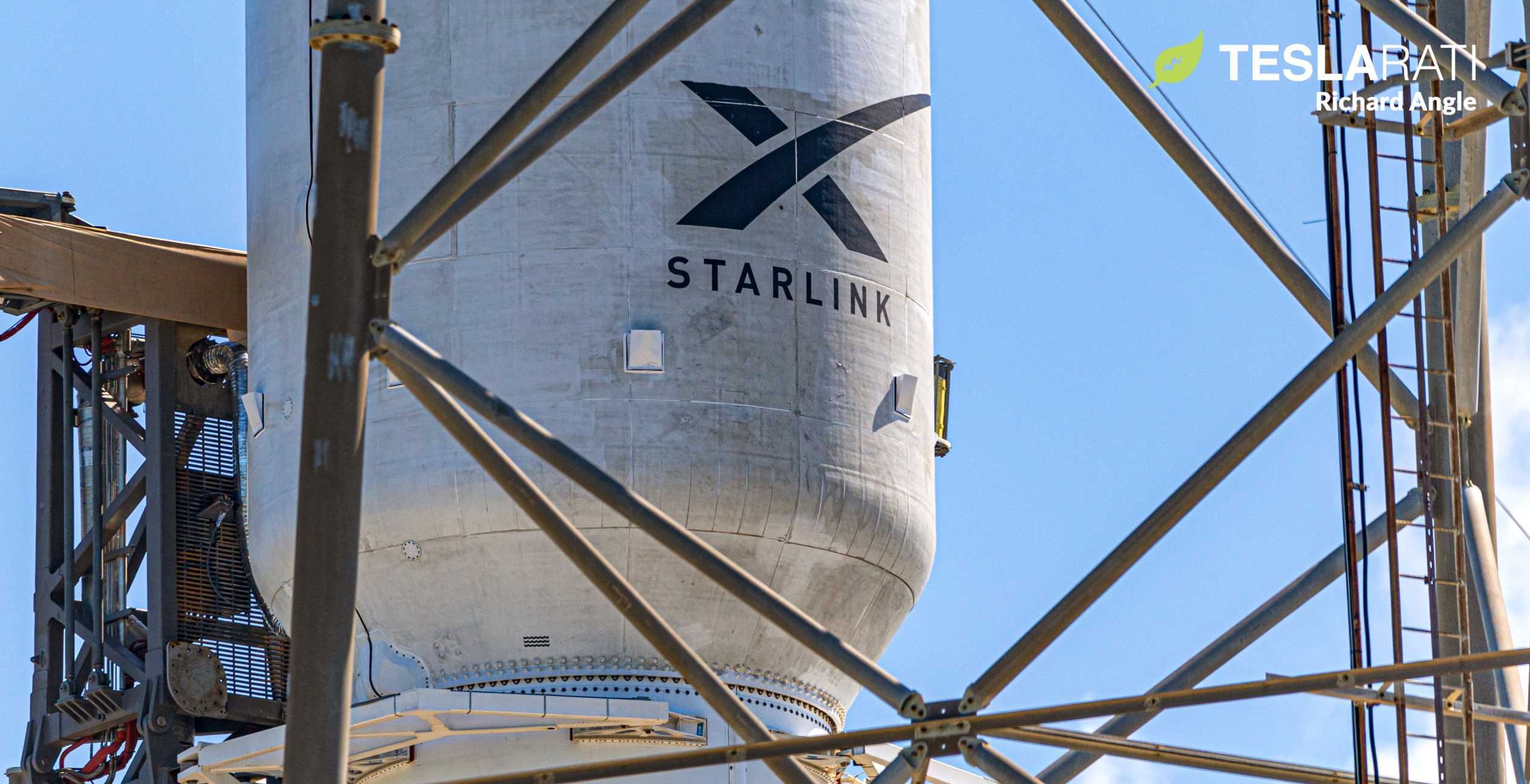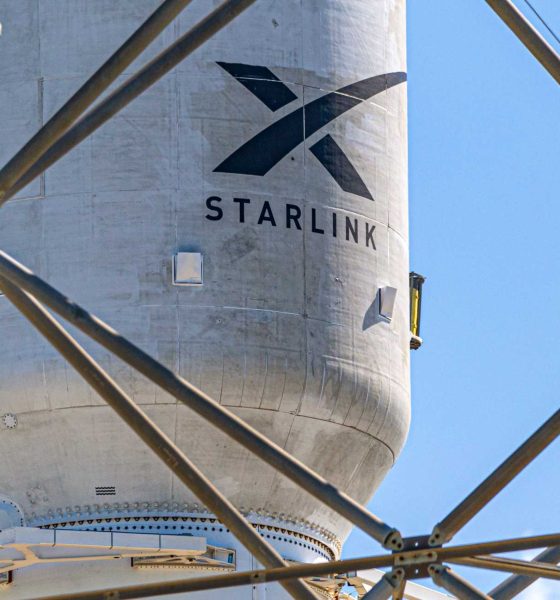

News
SpaceX Starlink beta arrives in the UK, sets sights on rest of Europe and Australia
As of the first day of 2021, SpaceX’s Starlink satellite internet beta program appears to have arrived in the United Kingdom in just one of numerous international debuts expected this year.
While not guaranteed to be the first outright, Reddit user OptiSport became the first confirmed Starlink beta customer outside of North America after receiving a beta kit (antenna dish, stand, and WiFi router) on or around January 1st. Beta invites began to roll out to those signed up at Starlink.com around mid-December, but OptiSport appears to be the first UK beta user to actually receive a Starlink user terminal.
According to others that received invites, SpaceX’s UK beta will kick off with pricing similar to the US and Canada, charging users £439 (+£54 shipping) for the dish and router and £89 per month for service. While the US – generally offering some of the slowest, most expensive internet in the developed world – is quite a different story, Starlink’s UK beta pricing unequivocally narrows its customer base to those simply unable to access the UK’s otherwise solid broadband infrastructure. Offering average download speeds of 100-150 Mbps, Starlink’s £89 UK offering can’t really stand with existing fiber, where the closest comparable mass-market option offers speeds of up to ~500 Mbps down for just £62 per month.
Still, as several /r/Starlink users and prospective UK beta applicants noted, those that fall outside of the UK’s wired infrastructure often find themselves stuck with expensive and inconsistent LTE/3G service or expensive, shoddy, and heavily constrained satellite offerings (£150/mo, 150GB data cap).
SpaceX’s Starlink beta UK rollout appears to be extremely cautious. At the moment, SpaceX appears to be shuffling a large portion of its active constellation, performing what is known as plane change maneuvers to modify where certain batches of satellites (known as planes) overfly the Earth.
Presumably meant to expand coverage and better distribute existing satellite capacity, there’s a chance that those plane change maneuvers – seemingly affecting almost 60% of all operational Starlink satellites – is harming network performance for those reliant upon some of those impacted planes. SpaceX did bluntly name the service as Starlink’s “Better Than Nothing Beta” but it’s still possible that the company has slowed beta rollouts during a period of engineered – but temporary – instability.
Regardless, SpaceX is currently hard at work seeking approvals to deliver Starlink internet services in more than a dozen other countries – each of which typically requires its own byzantine, unique, and nontransferable application process. Clear candidates for near-term Starlink service debuts include Greece (licensed, NET Q1 2021), Australia (partial license secured), and Germany (spectrum license secured, NET early 2021). Countries in the early stages of licensing include France, New Zealand, South Africa, India, Japan, the Philippines, Argentina, Brazil, Chile, and Colombia.
Ultimately, although countries with nationwide state-run censorship like Russia and China will pose major challenges, SpaceX’s goal is to offer Starlink internet to almost anyone on Earth.

Elon Musk
SpaceX issues statement on Starship V3 Booster 18 anomaly
The incident unfolded during gas-system pressure testing at the company’s Massey facility in Starbase, Texas.

SpaceX has issued an initial statement about Starship Booster 18’s anomaly early Friday. The incident unfolded during gas-system pressure testing at the company’s Massey facility in Starbase, Texas.
SpaceX’s initial comment
As per SpaceX in a post on its official account on social media platform X, Booster 18 was undergoing gas system pressure tests when the anomaly happened. Despite the nature of the incident, the company emphasized that no propellant was loaded, no engines were installed, and personnel were kept at a safe distance from the booster, resulting in zero injuries.
“Booster 18 suffered an anomaly during gas system pressure testing that we were conducting in advance of structural proof testing. No propellant was on the vehicle, and engines were not yet installed. The teams need time to investigate before we are confident of the cause. No one was injured as we maintain a safe distance for personnel during this type of testing. The site remains clear and we are working plans to safely reenter the site,” SpaceX wrote in its post on X.
Incident and aftermath
Livestream footage from LabPadre showed Booster 18’s lower half crumpling around the liquid oxygen tank area at approximately 4:04 a.m. CT. Subsequent images posted by on-site observers revealed extensive deformation across the booster’s lower structure. Needless to say, spaceflight observers have noted that Booster 18 would likely be a complete loss due to its anomaly.
Booster 18 had rolled out only a day earlier and was one of the first vehicles in the Starship V3 program. The V3 series incorporates structural reinforcements and reliability upgrades intended to prepare Starship for rapid-reuse testing and eventual tower-catch operations. Elon Musk has been optimistic about Starship V3, previously noting on X that the spacecraft might be able to complete initial missions to Mars.
Investor's Corner
Tesla analyst maintains $500 PT, says FSD drives better than humans now
The team also met with Tesla leaders for more than an hour to discuss autonomy, chip development, and upcoming deployment plans.

Tesla (NASDAQ:TSLA) received fresh support from Piper Sandler this week after analysts toured the Fremont Factory and tested the company’s latest Full Self-Driving software. The firm reaffirmed its $500 price target, stating that FSD V14 delivered a notably smooth robotaxi demonstration and may already perform at levels comparable to, if not better than, average human drivers.
The team also met with Tesla leaders for more than an hour to discuss autonomy, chip development, and upcoming deployment plans.
Analysts highlight autonomy progress
During more than 75 minutes of focused discussions, analysts reportedly focused on FSD v14’s updates. Piper Sandler’s team pointed to meaningful strides in perception, object handling, and overall ride smoothness during the robotaxi demo.
The visit also included discussions on updates to Tesla’s in-house chip initiatives, its Optimus program, and the growth of the company’s battery storage business. Analysts noted that Tesla continues refining cost structures and capital expenditure expectations, which are key elements in future margin recovery, as noted in a Yahoo Finance report.
Analyst Alexander Potter noted that “we think FSD is a truly impressive product that is (probably) already better at driving than the average American.” This conclusion was strengthened by what he described as a “flawless robotaxi ride to the hotel.”
Street targets diverge on TSLA
While Piper Sandler stands by its $500 target, it is not the highest estimate on the Street. Wedbush, for one, has a $600 per share price target for TSLA stock.
Other institutions have also weighed in on TSLA stock as of late. HSBC reiterated a Reduce rating with a $131 target, citing a gap between earnings fundamentals and the company’s market value. By contrast, TD Cowen maintained a Buy rating and a $509 target, pointing to strong autonomous driving demonstrations in Austin and the pace of software-driven improvements.
Stifel analysts also lifted their price target for Tesla to $508 per share over the company’s ongoing robotaxi and FSD programs.
Elon Musk
SpaceX Starship Version 3 booster crumples in early testing
Photos of the incident’s aftermath suggest that Booster 18 will likely be retired.

SpaceX’s new Starship first-stage booster, Booster 18, suffered major damage early Friday during its first round of testing in Starbase, Texas, just one day after rolling out of the factory.
Based on videos of the incident, the lower section of the rocket booster appeared to crumple during a pressurization test. Photos of the incident’s aftermath suggest that Booster 18 will likely be retired.
Booster test failure
SpaceX began structural and propellant-system verification tests on Booster 18 Thursday night at the Massey’s Test Site, only a few miles from Starbase’s production facilities, as noted in an Ars Technica report. At 4:04 a.m. CT on Friday, a livestream from LabPadre Space captured the booster’s lower half experiencing a sudden destructive event around its liquid oxygen tank section. Post-incident images, shared on X by @StarshipGazer, showed notable deformation in the booster’s lower structure.
Neither SpaceX nor Elon Musk had commented as of Friday morning, but the vehicle’s condition suggests it is likely a complete loss. This is quite unfortunate, as Booster 18 is already part of the Starship V3 program, which includes design fixes and upgrades intended to improve reliability. While SpaceX maintains a rather rapid Starship production line in Starbase, Booster 18 was generally expected to validate the improvements implemented in the V3 program.
Tight deadlines
SpaceX needs Starship boosters and upper stages to begin demonstrating rapid reuse, tower catches, and early operational Starlink missions over the next two years. More critically, NASA’s Artemis program depends on an on-orbit refueling test in the second half of 2026, a requirement for the vehicle’s expected crewed lunar landing around 2028.
While SpaceX is known for diagnosing failures quickly and returning to testing at unmatched speed, losing the newest-generation booster at the very start of its campaign highlights the immense challenge involved in scaling Starship into a reliable, high-cadence launch system. SpaceX, however, is known for getting things done quickly, so it would not be a surprise if the company manages to figure out what happened to Booster 18 in the near future.








